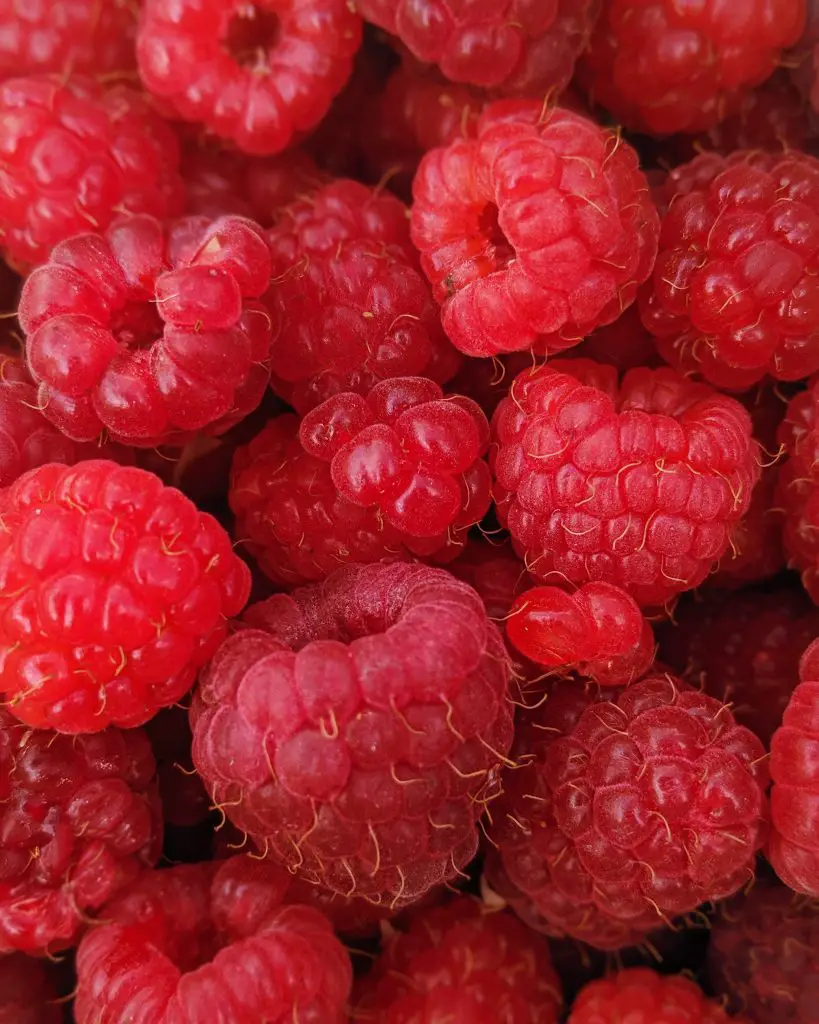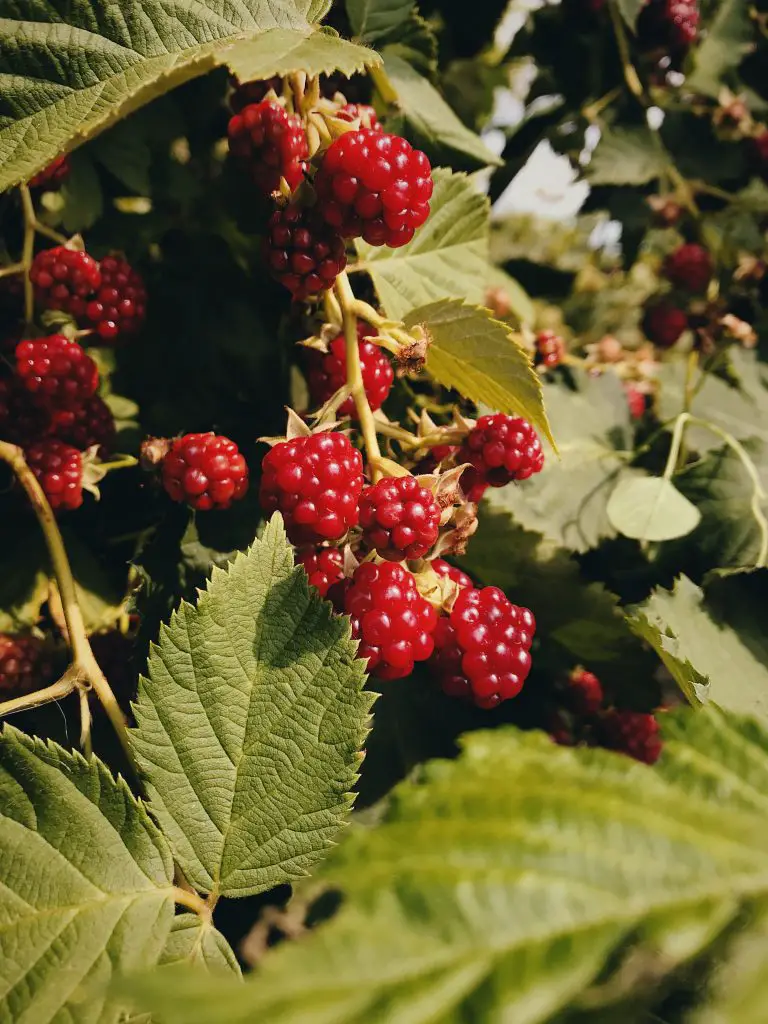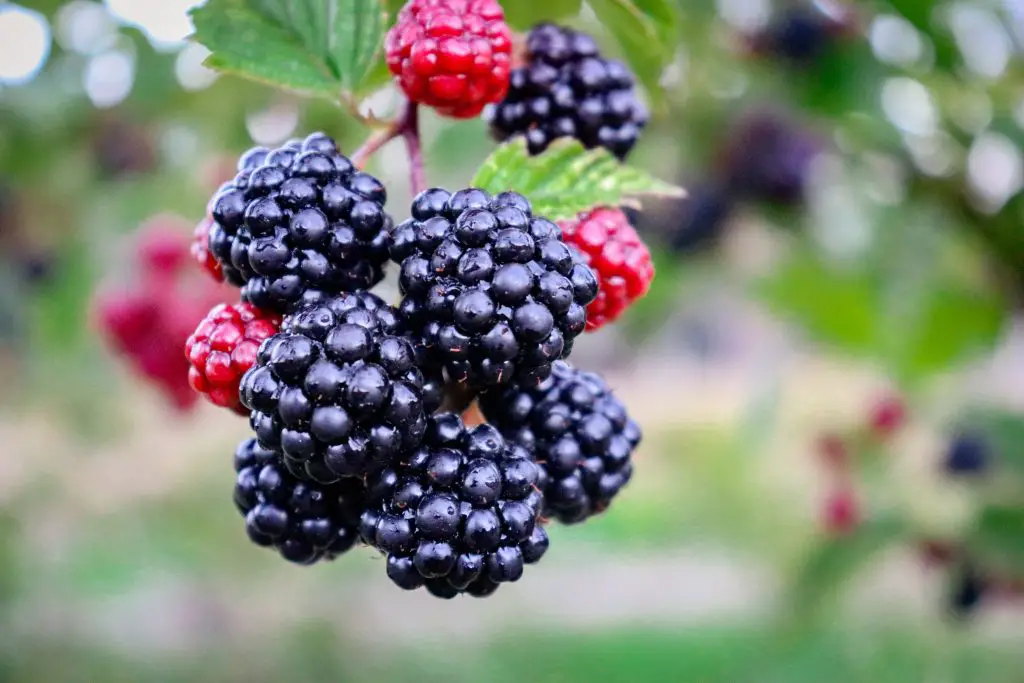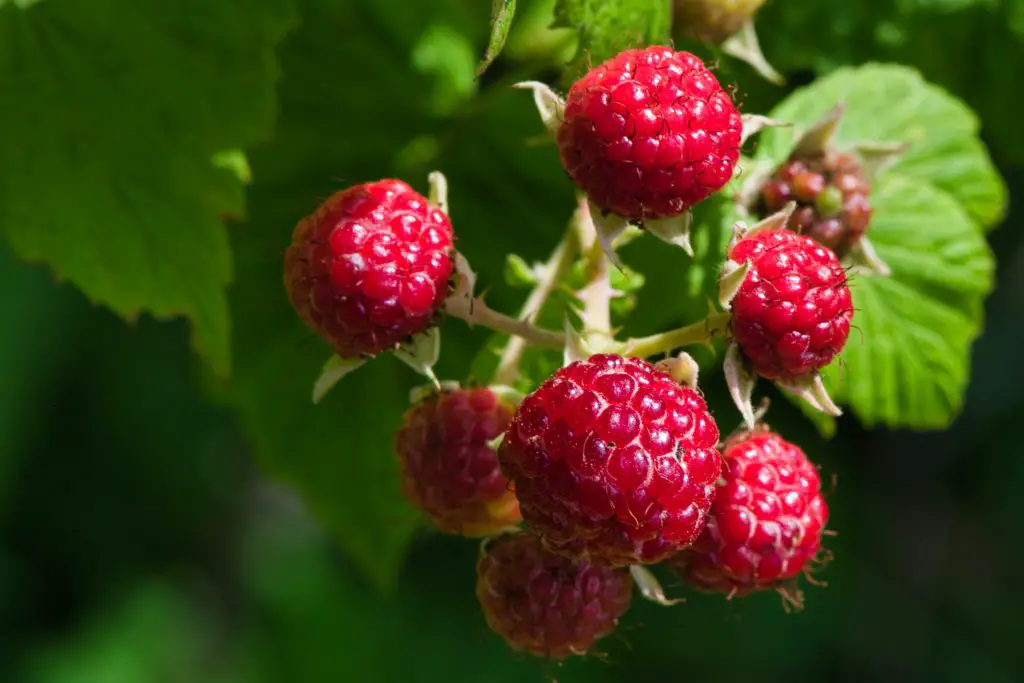Can You Plant Blackberries And Raspberries Together? Blackberries and raspberries a fantastic fruit to grow at home in your own garden as they will produce masses of fruit through the summer period. However, in many home gardens space is limited which means it is important to pack in as many plants as possible to make the most of the limited space. So, if you like blackberries and raspberries, Can you grow them in the same place or will this cause problems?
Blackberries and raspberries can be planted side-by-side happily in a garden bed and that will not significantly affect the yield of fruit obtained provided that the plants do not become too crowded. As they are from the same genus they will tend to fruit at similar times of the year, however, the timing of fruiting with raspberries can be manipulated depending upon the variety been grown.
Raspberries are classified as either summer or autumn fruiting varieties which are based on the age of the canes which produce the fruit. Autumn fruiting varieties produce the fruit on this year’s new canes while summer fruiting varieties produce the fruit on last year’s Canes. Due to this difference varieties that have developed canes from the previous season fruit earlier because they don’t need to produce the cane followed by flowers and then fruit.
However, autumn fruiting varieties can be manipulated to produce two flushes of fruit depending upon how they are pruned. Autumn fruiting varieties will produce crops for a second year if the canes are left which means that you can get the same variety to fruit at different times by pruning half of the canes to the ground and leaving the other half intact.

What’s The Difference between blackberries and raspberries
The fundamental difference between the fruit Is the presence of a core within the fruit. When raspberries are picked from the plant the core of the fruit remains on the plant leaving a hole in the center of the fruit whereas when blackberries are picked the core remains with the fruit.
Will Blackberries And Raspberries Cross Pollinate?
Both blackberry and raspberries belong to the same genus and therefore are closely related, however, both plants are distinct and separate species which means that they will not cross-pollinate.
For those that are not familiar with the definition of species, it is when two plants can cross-pollinate they are considered to be the same species.
It is also important to note that the term raspberry and blackberry does not refer to a single species of plants but rather several species within the genus.
Do You Need Two Blackberries Or Raspberries Plants To Get Fruit?
Blackberries and raspberries are both self-pollinating fruits that do not require a second variety to produce fruit. However, most flowering plants will produce more pollinated fruit if there are more flowers in the general area as it increases the chance of pollinators visiting more than one flower.

How To Grow Blackberries And Raspberries
Growing blackberries and raspberries are fairly easy to do and requires relatively little maintenance throughout the year. However, you should be warned that blackberries and raspberries spread easily and therefore need to be contained.
To start growing raspberries or blackberries it is best to buy bare-rooted canes in late winter to early spring when they are usually available in garden centers. When planting them select a sunny location that gets at least 6 to 8 hours of sun per day and has rich moist and free-draining soil with plenty of nutrients.
If your soil is somewhat impoverished it is advisable to add a bag of compost before planting the cane. Once the soil is prepared you also need to create a support structure as most varieties produce canes that are at least 4 to 6 feet long however there are some varieties that do produce canes that are up to 20 feet long.
The ideal thing to use for a support structure is either Rio mesh or temporary fencing panels as they are easy to erect strong and long-lasting. They are also relatively large which allows plenty of space for tying them in later in the season.
To plant the canes in the ground start by digging a hole that is approximately 10 inches wide and 10 inches deep at the base of the support structure. Once the canes are in position backfill the hole with the soil to ensure that there is no pocket air in the soil around the root ball.

Water the plants thoroughly and apply a layer of mulch that is between 2 and 4 inches thick around the base of the plant to prevent it from drying out. In the first season or two, you will need to water the plant regularly to ensure that it has all the moisture it needs, however, after this period the canes are relatively drought tolerant.
Once the canes develop it will be necessary to tie them into the support structure to ensure that they are secure, this typically needs to be done every couple of weeks during spring when the canes are growing.
If you are growing summer fruiting varieties will find that the canes will continue to develop throughout the growing season and will possibly need to be weaved across the front surface of the support structure as they are too long to just tie than in an upright position.
If you are in a situation where you have been gifted canes from a neighbor and you are really unsure about what type of plant you have simply allow it to grow and do not cut it at all throughout the season. If it produces fruit in the first season it is an autumn fruiting variety and if it does not it is a summer fruiting variety.
Once the canes have developed in height and they will start to produce flowers followed by fruit in late spring too early spring to early summer. Once they have developed the fruit they need to be checked regularly.
As a general rule with most varieties, they will sweeten as the color becomes darker. To work out the best time to harvest them you will need to try a berry or two to make sure they are ready to eat. You will find that you are able to quickly recognize when it is ripe by the color of the fruit.

Preparing The Canes For The Following Year
To ensure that you have fruit the following yet you will need to do some maintenance at the end of the season to get the plant ready for next year’s crop. However, what you need to do will depend upon the type of berry you have. For autumn fruiting varieties they can simply be cut to the ground at the end of the season and they will reshoot and produce fruit the following year. However, if you want to spread the fruiting period for these types of plants leave half the canes on the plant.
In the case of the summer fruiting varieties, you will need to keep the current years’ canes on the plant and tie them securely to the support and also remove any canes that have just fruited. However, as the plant develops you will find that you have more canes than you need so it may be necessary to remove some of the current year’s growth to avoid overcrowding. as a general rule, it is recommended that you leave 5 to 6 canes on the plant at most.
I hope that you found this until useful and had great success with your blackberries and raspberries. If you have any questions or comments please leave them in the section below.
Relevant Articles
Blueberries Vs Raspberries: What Is The Difference?
How Many Raspberries Will One Plant Produce?
Blueberry vs Blackberry: What Are The Differences?
Blackberries Vs Black Currants: What’s The Difference?
